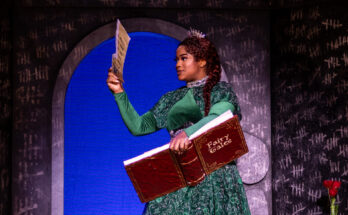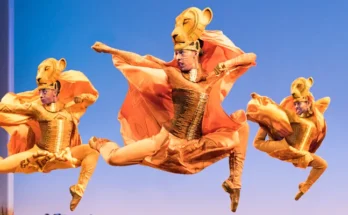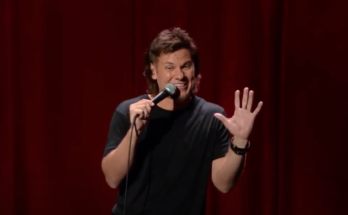By Kristi Casey Sanders
Did the priests forbid it? Did the Irish do it to trick British soldier/spies? Or were traveling Irish dance teachers too lazy to teach students anything other than fancy footwork? The true reason will forever remain shrouded in history, but the fact remains: Irish dancers haven’t much use for their hands.
Dance competitions in particular stress the rigid downward placement of hands, and traditional Irish dances have little use for them other than as links between line dancers. That is one reason why Riverdance , when it burst onto the scene in 1994, caused such a stir. Those dancer’s hands were downright expressive.
It all began with the Eurovision Song Contest, something most Americans have (blessedly) never seen. Imagine “American Idol” as an Olympics of half-baked, tight-pants-wearing French pop singers, bloated German crooners and a pack of Polish would-be Madonnas, all representing the “best” unreleased song from their country. The yearly competition to find the least offensive pop song on the Continent is not without all merit, however. It did give us ABBA, the indomitable Swedish supergroup that began their reign by releasing “Waterloo” on an unsuspecting TV audience in 1974. Thankfully, ABBA never lost its penchant for Eurovision-style costumes. (Incidentally, Celine Dion won the contest for Switzerland in 1988.)
Beginning in 1993, the Irish, perhaps inspired by the rise of U2, began to dominate the Eurovision Song Contest. For the 1994 broadcast in Ireland, producer Moya Doherty decided to create an Irish dance number as an interval piece, and hired two Americans to star in it. Irish dancing in Ireland had not been a cool thing to do for 200 years, but in America, Irish dance thrived. Especially in big cities, every Irish-American worth their salt made sure their kids, regardless of gender, were trotted off to the local dance school to learn a bit of the jig and wheel. In New York, Chicago and Philadelphia, great champions were born. In 1994, the two top Irish dancers in the world were Americans Michael Flatley (the future “Lord of the Dance”) and Jean Butler.
The interval segment traditionally occupied a period of time Eurovision watchers reserved for changing the channel, hitting the loo or grabbing a snack. Instead, audiences were riveted by the performance of Flatley and Butler, backed by a chorus of Irish singers, 20 dancers and music composed by Bill Whelan. When Whelan’s track for the segment outsold that year’s winning song, the idea for Riverdance was born.
The show, a celebration of Irish dance and music, also presented Russian, flamenco and tap dancing as art forms with ties to the Emerald Isle. Aside from the “expressive hands” controversy, Riverdance also drew flack for using prerecorded taps to create a wall of sound when line dancers kicked up their heels. But that did not concern audiences – they found the rising swell of the dance uplifting, the music captivating. Riverdance opened in Dublin in 1995, and became a worldwide phenomenon, making it cool, once again, for the Irish to dance.
Riverdance plays The Fabulous Fox Theatre from May 13-18.



